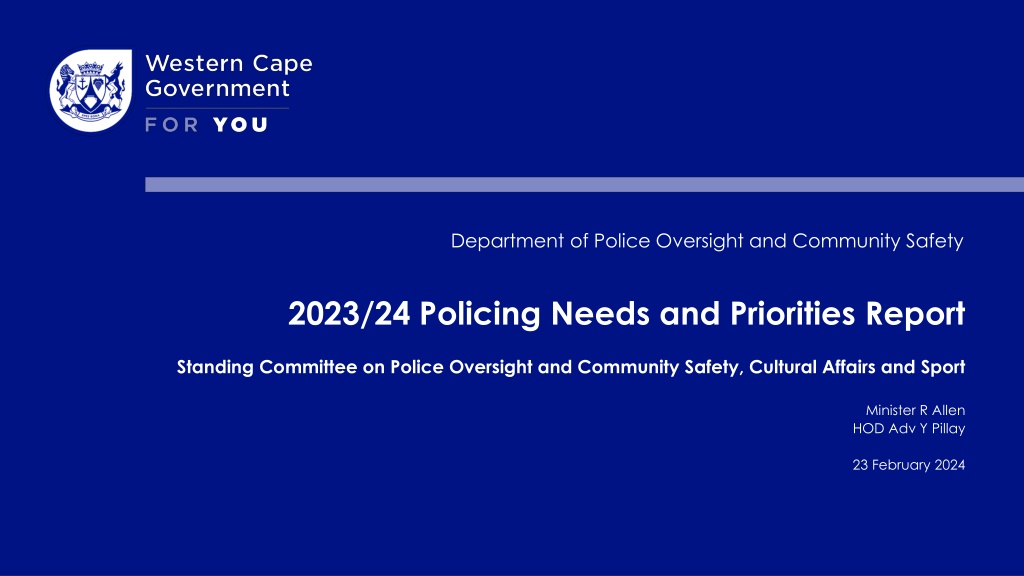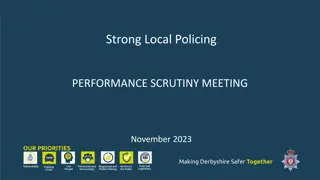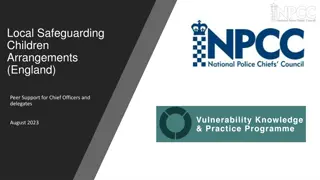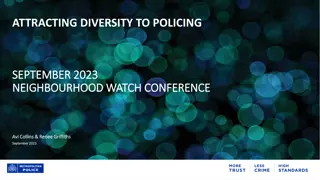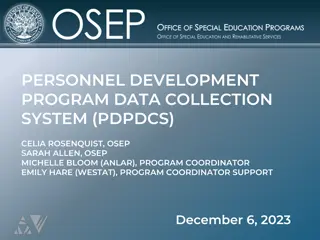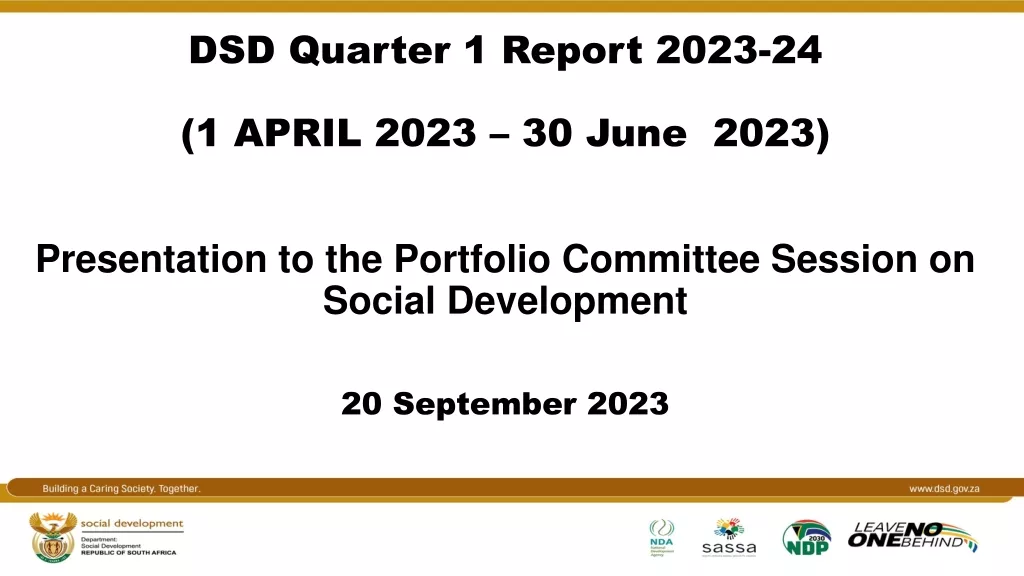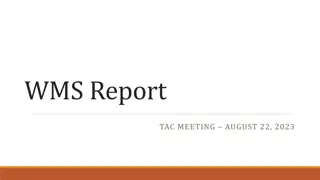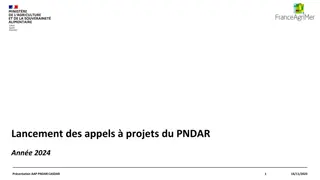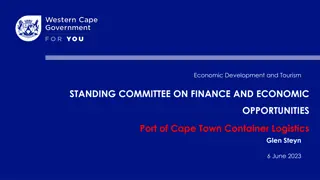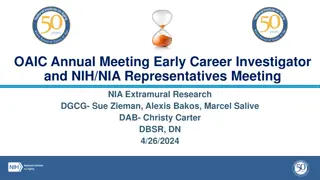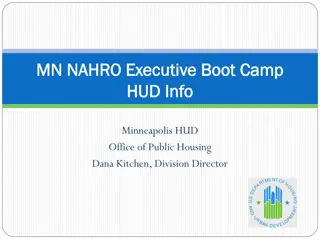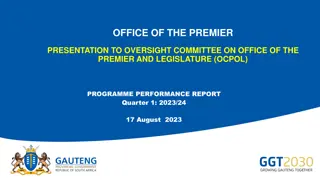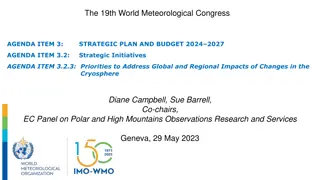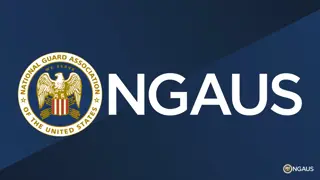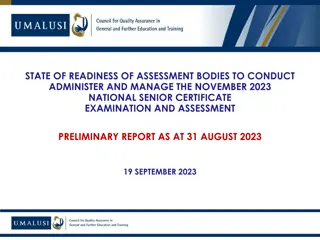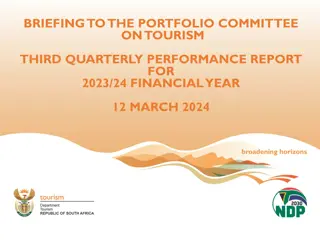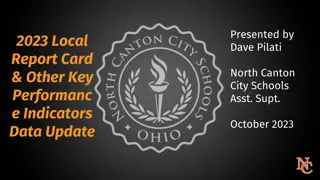Policing Needs and Priorities Report 2023/24
The Department of Police Oversight and Community Safety's report outlines key findings and recommendations for improving law enforcement effectiveness, addressing serious crimes, firearm violence, gang-related activities, public order policing, youth development, and safety infrastructure. The report emphasizes aligning policing resources with identified needs and priorities to enhance safety in the Western Cape and provides policy recommendations for decision-makers.
Download Presentation
Please find below an Image/Link to download the presentation.
The content on the website is provided AS IS for your information and personal use only. It may not be sold, licensed, or shared on other websites without obtaining consent from the author. Download presentation by click this link. If you encounter any issues during the download, it is possible that the publisher has removed the file from their server.
Presentation Transcript
Department of Police Oversight and Community Safety 2023/24 Policing Needs and Priorities Report Standing Committee on Police Oversight and Community Safety, Cultural Affairs and Sport Minister R Allen HOD Adv Y Pillay 23 February 2024
PNP Findings and Recommendations SAPS resources Policing of serious crime Firearm violence & firearm control Improving law enforcement effectiveness and coordination Gang related crime Public order policing Local Gov Law Enforcement Strengthening social protective factors against violence Improving safety infrastructure in public spaces Substance abuse Develop integrated Youth development communications system Youth recreation Address vandalism Early Childhood Improve infrastructure Development Crime Prevention through Environmental Design 2
Policing Needs and Priorities Mandate Section 206 of the Constitution: The Minister of Police must determine the National Policing Policy after consulting with provincial governments and taking into account the policing needs and priorities of the provinces as determined by the MECs (Member of the Executive Council). National Policing Policy may make provision for different policies in respect of different provinces after taking into account the PNPs of those provinces. Community Safety Act, 2013: The MEC must report annually to the Provincial Parliament on his/her PNP findings. Must be considered and debated by the Standing Committee. The Provincial Commissioner and Heads of Municipal Police Service must be given an opportunity to respond to the report and findings. MEC formulates the recommendations on policing needs and priorities to be forwarded to the Minister of Police. The MEC must submit the approved policing needs and priorities to the national Minister to be taken into account when the policing needs and priorities for the Province are formulated. 3
Objectives of the PNP Research Project To influence the allocation, distribution and utilisation of policing and safety resources in line with the identified policing needs and priorities and safety concerns. To determine the policing needs and priorities to increase safety in the Western Cape. To make policy recommendations to decision makers. To publish a Provincial Policing Needs and Priorities Report. To distribute the report to a wide number of key role players and decision makers, amongst others, the Provincial Standing Committee, Provincial Cabinet, National Minister for Police, National Secretariat for Safety and Security, Provincial Police Commissioner, SAPS District and Station Commanders, Metro Police, all Provincial, cluster and local Community Police Forum (CPF) chairpersons, Provincial Government Departments, District and Local Municipalities. Produce District reports of PNP consultations. 4
PNP Process for 2022/23 & 2023/24 Financial Years Two-day consultative engagements with each police district: September 2022 - February 2023. Day one: integration of technology and integrated responses to Rural Safety Day two: policing needs and priorities of the province. Key stakeholders and representatives were identified and invited. Focus group discussions on policing and law enforcement, social cohesion and urban design and safety. Report compiled at the end of 2022/23 & updated in quarter 1 of 2023/24. 5
Policy Briefs In addition, the Department appointed the African Policing Civilian Oversight Forum (APCOF) to compile policy briefs on six focus areas, which were completed by experts in each of the areas. The findings have been incorporated into the recommendations: 1) Policing of serious violent crimes in the Western Cape; 2) Public Order Policing and implications for the Western Cape; 3) Local Government and Law Enforcement; 4) Firearm violence and firearm control in the Western Cape; 5) Policing of gang related crime; and 6) Corruption in the police. 6
SAPS Western Cape Staffing Levels: 2010/11 2021/22 SAPS Westen Cape establishment SAPS national staff establishment 205,000 22,500 22,000 22,011 200,000 199,345 21,500 195,000 21,000 190,000 20,500 20,518 185,000 20,000 19,500 179,502 180,000 19,000 176,180 175,000 18,500 18,867 170,000 18,000 17,500 165,000 17,000 160,000 2008200920102011201220132014201520162017201820192020202120222023 Total Employees Granted Establishment Steep decline in HR from 2011/12 Nationally SAPS staff establishment increased to 179 502, with a vacancy rate of 0.4% in March 2023. 10 000 new recruits in the year, but 5 733 terminations (net gain 5000). Figures for 2023 in the WC are not available. Total establishment of 18 867 in 2022. In November 2023, there were 15 327 SAPS members deployed at police stations. 8
SAPS human and physical resources (Nov 2023) SAPS members Vacancy rate Detectives Vehicles There are vacancies of Top ten murder precincts 22/23 Delft Nyanga Mfuleni Kraaifontein Harare Khayelitsha Gugulethu Philippi East Samora Machel Mitchells Plain Total top 10 Total Province % top 10 of Province % contribution of murder in top 10 more than 10% at all top 10 299 352 295 305 296 342 199 176 103 438 2805 15327 18% 46% -16,9% -21,1% -17,1% -11,8% -13,2% -14,9% -14,2% -15,4% -15,6% -13,3% 61 59 58 50 56 75 46 36 10 116 567 2565 22% 62 72 63 68 65 68 50 45 29 104 626 3748 17% precincts. The 3 highest have the highest level of vacancies. Highest number of vehicles & detectives allocated to Mitchells Plain.
SAPS Resources Capacity The revised Theoretical Human Resource Requirement (THRR) needs to be implemented and its impact should be monitored to determine whether it does address the inequality of resource distribution. SAPS funded vacant posts should be filled immediately. The vacancies at priority stations with the highest level of violent crime should ideally be staffed at full capacity. SAPS must recruit and train police reservists to bolster their ability to address crime. SAPS must increase police presence in high crime areas, and not only during the peak hours of crime. SAPS must facilitate more integrated operations which include all role players, such as metro police, and municipal law enforcement. SAPS should consider introducing overlapping shifts by 30 minutes to ensure that policing continues seamlessly over a 24-hour period. 10
SAPS Resources Capacity (Continued) Staff high priority precincts in the City of Cape Town (CoCT); there are also expanding needs in rural areas which must also be attended to. Ensure that SAPS members can speak the main languages of a precinct to which they are posted, in order to break down the communication barrier and build trust between community and police. Address the shortages in vehicles and ensure that vehicles appropriate to the terrain are procured. Reduce the time taken to repair vehicles to ensure they spend more time on active duty. 11
Policing of Serious Violent Crimes Responding to crime hotspots (Hot Spot policing) It is argued that many murders and other serious violent crimes occur at predictable times and places. Evidence shows that police resources and activities should intentionally focus in these areas and times to reduce crime without displacing it elsewhere. Responding to high-risk repeat offenders Evidence shows that identifying, targeting and supporting repeat violent offenders is one of the most effective means to reduce serious violence. More focus on regulation of alcohol sales and consumption Although evidence on the impact of policing on alcohol harm has been inconclusive, the effect on violence of the pandemic- related alcohol bans suggests that effective law enforcement can reduce related risks. Building trust and legitimacy to reduce violence Police can enhance trust and legitimacy by treating all people fairly and respectfully. This improves public cooperation with police and compliance with the law. Focus on organised crimes like extortion, gangsterism and kidnapping. There must be greater coordination between the SAPS, Law Enforcement and Metro Police to conduct intelligence led special operations against extortion. This should be prioritised by all involved in the provision of safety including government departments, CPFs, Neighbourhood Watches (NHW), the private sector, Non-governmental Organizations (NGO) and Municipalities. 12
Policing of Serious Violent Crimes (Continued) Continuing to utilise an evidence-based approach (EBP) to policing The SAPS in the Western Cape have adopted an EBP approach to policing. This needs to be fully implemented with policing initiatives tailored to the particular requirements of a specific area. The SAPS, City of Cape Town and POCS (supported by Hans Seidel Foundation and Institute for Security Studies) piloted an Evidence Based Policing Pilot in Mitchells Plain in Q3 of 2024. This will be extended to Nyanga, Delft, Harare and Gugulethu in 2024 (April). This will focus on hotspot policing through patrols by SAPS and LEAP. 13
Firearm Violence and Firearm Control A high proportion of violent crime in the Western Cape is committed using firearms, most of them illegal. Corruption and weaknesses in the firearms control system contribute to the problem. Recommendations: Finalise amendments to the Firearm Control Act (FCA). Introduce more stringent controls of firearms. Introduce a centralised electronic management system on firearms under control of SAPS, including the SAP 13 stores. This could be piloted in selected precincts. Accelerate the implementation of the Central Firearm Registry (CFR) turnaround strategy. Increased surveillance of firearm dealers / monitoring of sales. Pilot the tracking of firearms and ammunition. SAPS should establish and implement a new firearm plan that is drafted in consultation with crime-affected communities and other relevant stakeholders. Research evidence from Cape Town indicates that murder rates decline when there is a firearm-focused cordon and search operation in areas that experience high rates of murder. 14
Firearm Violence and Firearm Control: Oversight and Community Involvement SAPS must properly vet the family members of gun applicants to prevent the issuing of licenses to organised crime groups and their families. SAPS must improve command and control of state firearms. Establish a dedicated project or desk within the Western Cape Police Ombudsman s office that specifically deals with firearms-related complaints (including police corruption). Continue Court Watching Brief focus on firearm cases. The NHW accreditation system in the Western Cape (and associated resourcing and reporting) could include elements of firearm related matters, where NHW members could provide detailed (place-specific) information on illegal firearm possession and use. Expand the CoCT Shot-spotter project together with the SAPS and ensure a coordinated monitoring and response (now expanded to Nyanga, HP, Manenberg & Lavender Hill. Continue and expand the Law Enforcement Advancement Plan (LEAP) programme and other policing and law enforcement operations following a firearm hotspot approach. 15
Gang Related Crime Implement the integrated provincial anti-gang strategy. Prioritise coordination and collaboration between the different levels of government and departments in their responses to gangsterism. Appoint designated officials in government to exclusively manage the coordination and enhance stakeholder relations to lead the development of the Anti-Gang Implementation Plan. Emphasise interventions at an area-based level; intensify responses at an operational level. Strengthen and capacitate the SAPS Anti-Gang unit and explore building capacity at district level. SAPS to utilise technology to assist their efforts to respond to gangsterism. Increase applied qualitative research to deepen understanding of gangs. Conduct evaluations on the current interventions aiming to address gangsterism. Revise the Prevention of Organised Crime Act (POCA) to expand the definition of gangs and review the minimum sentences for convictions under this legislation. 16
Public Order Policing Review mandate of Public Order Policing (POP) units and limit their mandate. Focus on specialising in public order & crowd management. Training needs to take account of real-life protest situations in South Africa urban & rural. SAPS must implement its 2016 enhancement plan. Capacity to the province should be increased. Integrated training needs to be provided to all stakeholders. POP training should extend to other law enforcement agencies responding to public order policing (metro police, Emergency Medical Service(EMS)). SAPS should develop a training manual for public protest marshals. SAPS should develop a clearer protocol around the use of rubber bullets. 17
Strengthen Local Government and Law Enforcement Capacity Provide a dedicated provincial vetting service for municipalities wishing to recruit law enforcement personnel. Provide a training college or support the training college of the City of Cape Town for the training of Law Enforcement Officers throughout the province, similar to the Gene Louw Provincial Training Traffic College. Monitor training quality and ensure the accreditation of the qualification and standardisation offered by the training college. Offer assistance to municipalities in training their Law Enforcement members or require municipalities to give evidence of the training they have given, if they do not make use of the college. Encouraging SAPS to co-operate productively with Law Enforcement in municipalities. Strengthen law enforcement capacity. Address duty hours of municipal Law Enforcement Officers. 18
Violence Prevention/ Social Cohesion Strengthen multi-sectoral partnerships to address social issues. Implement measures to address alcohol harms including amendment of the Western Cape Liquor Act (Minimum Unit Pricing and trading hours), development of standard by-laws and effective law enforcement of liquor outlets. Adopt a harms reduction approach to substance abuse. Department of Health & Wellness (DOH&W): Strengthen treatment and facilities dealing with mental illness. Department of Social Development (DSD): Improve access to drug treatment and rehabilitation in districts. DSD: Implement evidence informed parenting programme in partnership with NGOs/Community Based Organisations (CBOs). Ensure functional Victim Empowerment Programme (VEP) facilities in all police stations. Promote and implement community-based solutions to create a culture of caring and provide support for children and youth. 19
Social Cohesion Western Cape Education Department (WCED)/DSD: ensure Early Childhood Development services. Department of Cultural Affairs & Sport (DCAS)/ Municipalities/Department of Infrastructure (DoI): Ensure adequate recreational facilities for youth and green spaces in residential areas. Implement targeted youth programmes Expand Chrysalis Academy to assist youth at work programmes 20
Recommendations in Technology and Infrastructure Government needs to ensure the provision of uninterrupted electricity to police stations. Streetlights: The CoCT and municipalities must ensure the provision of adequate street lighting that is not dependent on electricity, especially during the load shedding periods, as this creates ideal opportunities for criminal activities. Better use of integrated technology across municipalities and sectors. There is a need for micro-level information on where crime is happening. POCS to facilitate the integration of information and communication technology systems for better coordinated response by the different crime prevention stakeholders. Treasury and relevant public sector stakeholders should prioritise funding for the integration of radio systems and improved information technology systems. The use of drones to detect crime and monitor safety should be further explored in the districts. 21
Urban Design and Infrastructure Ensure Law Enforcement prevent vandalism of key infrastructure. Work with community groups for monitoring and reporting safety concerns. Address safety of officials involved in maintenance and building operations. Installation of traffic lights at key intersections to ensure safety of pedestrians and vehicles. Local review/update their by-laws to better regulate spaza shops. Involve the Department of Economic Development and Tourism (DEDAT) to engage in conversations around zoning in the Community Safety Forum (CSF) meetings. Economic Development (LED) depts at municipalities should Municipal and District LED departments must ensure uniform by-laws that can be applied by all municipalities. There is a need for more collaboration between the private and public sector. Crime prevention through environmental design principles should be incorporated into rural and urban design planning 22
Whole of Government Approach Safety is a whole-of-society and whole-of-government concern, and all sectors need to work together in an integrated and planned manner. The role of each department and entity needs to be clarified and mapped out. This includes the implementation of the Joint District and Metro Approach (JDMA). Activate Ward Councilors, Ward Committees and Community Development Workers to play an active role in the development of their areas. Safety plans need to be developed and incorporated in municipal Integrated Development Plans. 23
Conclusion The comments from Standing Committee, SAPS and Metro Police will be integrated into a revised report. Report will be submitted to the Cabinet for endorsement. Report will be published and shared widely. POCS will engage SAPS and other stakeholders to look at how recommendations can be implemented. Further engagements will take place with municipalities. 24
